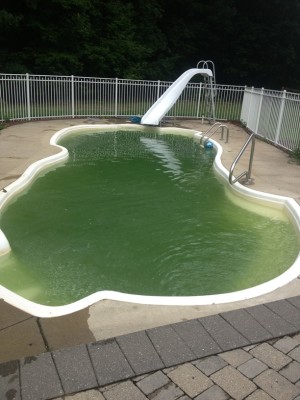The weather’s been hot and humid- typical summer. Perfect for swimming. Nothing is more refreshing than taking an afternoon dip in your sparkling blue pool. With all the heat comes more responsibility for pool owners because algae thrives in hot conditions.
Algae growth
The hotter the weather, the more the pool is used. The more your pool is used, the more chlorine required for your pool. Chlorine is the frontrunner sanitizer to fight algae growth.
Even if you added a large dose of chlorine to your pool, it is still not completely protected. With really hot spells, pools are not cooling down at night. This keeps the water consistently warm- leaving more opportunity for algae growth. For this reason, we recommend pool owners keep a close eye on their chlorine levels. If you own a salt pool, use the ‘super chlorinate’ button.
Phosphates in your pool water are another substance that can affect algae blooms. They are found in nature and usually enter your pool through bird or bat droppings. Gross, I know. Nevertheless, they will most likely end up in your pool creating the phosphates the algae loves to feed on. Rain water run off and machine-washed swim suits can also introduce phosphates to your water.
Chlorine cannot completely eliminate phosphates, so you may need to add Phosphate Starver. This will rid your pool’s water of phosphates so the chlorine can properly do it’s job by destroying the algae.
pH levels
In the hot summer months, be sure to keep an eye on your pool’s pH levels. If the pH levels are off balance, this will negatively affect the chlorine efficiency.
If your pool’s pH levels are too high, scale and stain can be a factor in your pool. If the pH levels are too low, it can begin to hurt eyes and skin and make everyone feel itchy rather than cooled off. To fix this issue, add acid to the water.
To be safe, it is always a good idea to contact a pool technician at Ask the Pool Guy and we can see that your water is properly balanced for you!
